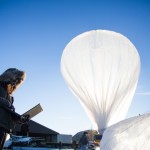The Freqonomics podcast explores “the hidden side of everything.” This particular episode does a masterful job of charting the Internet’s trajectory from its inception (and before) to the present. Without being overly technical, it outlines some key trends that may threaten the original vision of the net as an open communication platform for everybody—and may also have profound impact on our greater society.
Category: 9.1 Inside the Internet
Many people believe that privacy is a thing of the past. It’s true that our networked world makes it harder to keep secrets. But there are many things you can do to protect your privacy online. This Huffington Post article clearly outlines some quick fixes you can make in a few minutes.
Facebook made lots of headlines a few months ago when people discovered that their news feeds had been manipulated for research purposes. Many people were shocked that they’d been unwitting participants in massive social science studies. But similar research at Facebook has also been used to help the company to determine how to best help customers deal with unwanted posts. This Radiolab program explores the light and dark sides of Facebook’s gigantic social engineering projects.
www.radiolab.org/story/trust-engineers/
 Predicting the future isn’t easy—especially when it’s coming so fast. But people still try. Which of these expert predictions about the Internet’s future ring true to you?
Predicting the future isn’t easy—especially when it’s coming so fast. But people still try. Which of these expert predictions about the Internet’s future ring true to you?
huffingtonpost.com/2014/03/11/heres-what-the-internet-c_n_4943051.html
 If you live in a city, you probably take the Internet for granted. It’s always on, everywhere you go. But for many people in sparsely populated areas, the Internet is out of reach. In this Wired article, Steven Levy describes how Google is experimenting with a system that delivers the Internet to these people using balloons.
If you live in a city, you probably take the Internet for granted. It’s always on, everywhere you go. But for many people in sparsely populated areas, the Internet is out of reach. In this Wired article, Steven Levy describes how Google is experimenting with a system that delivers the Internet to these people using balloons.
wired.com/business/2013/06/google_internet_balloons/all
When you post something on Facebook, stream a movie from Netflix, or share data with Dropbox, you’re using “the cloud.” Apple’s iCloud makes it possible for 250 million people to store their music, appointments, and documents “out there” and effortlessly access them via iPhones, iPads, Macs, and other digital devices. But what, and where, is the cloud, and how does it work? This slightly technical Wired article examines the futuristic technology inside the cloud—technology that’s likely to find its way into future PCs, tablets, and phones.
wired.com/wiredenterprise/2013/03/flash-fusion-io-apple-facebook/all
npr.org/blogs/alltechconsidered/2012/06/06/154430791/ipv6-a-new-internet-expands-the-web-by-trillions-of-addresses
You probably didn’t notice, but the Internet just got bigger. A behind-the-scene change dramatically increases the number of possible Internet addresses, making it possible for all kinds of devices to stake out a space on the net. This NPR story explains the change and what it means to you.
http://www.npr.org/2012/05/31/153701673/the-internet-a-series-of-tubes-and-then-some
The Internet isn’t just a software cloud. Andrew Blum’s book, Tubes: A Journey to the Center of the Internet, reveals the nuts and bolts of the physical Internet. In this Fresh Air interview, he talks about the hardware network that makes our Internet experience possible.